Ricochet is the best place on the internet to discuss the issues of the day, either through commenting on posts or writing your own for our active and dynamic community in a fully moderated environment. In addition, the Ricochet Audio Network offers over 50 original podcasts with new episodes released every day.
 Shut Up as in a Trap: Civilians During the Siege of Vicksburg, Mississippi
Shut Up as in a Trap: Civilians During the Siege of Vicksburg, Mississippi
In November 1860 Vicksburg resident James Shirley wrote of the turbulent times his city was experiencing: “We are in the midst of a
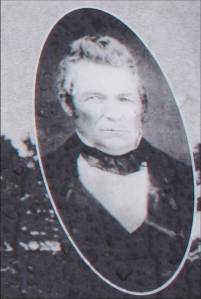
terrible commotion caused by the election of Abe Lincoln. Our Southern chivalry and fire-eaters are above fever heat; meetings are held throughout the country; a large amount of gas is let off daily…warm and heated arguments are held at every corner of the streets…all kinds of property has depreciated in value and without the present dark and gloomy clouds which now hang over the South so portentous, pass away soon a terrible storm will overwhelm us.” Shirley was prophetic; in less than three years he would see his home become a battlefield, and shortly thereafter he would find a grave in his once beautiful back yard.
In the years leading up to the Civil War, the majority of Vicksburg’s citizens had been against secession, realizing that the commerce that was the city’s life-blood would suffer if war came. Once secession was accomplished, however, most Vicksburgers quickly reconciled themselves to the fact, and their strong sense of duty to Mississippi asserted itself. Newspaper editor Marmaduke Shannon, who had argued forcefully for staying in the Union, probably summed up what many felt when he wrote, “It is enough for us to know that Mississippi, our state, our government has taken its position. We, too take our position by its side.”
With a grim certainty that war with the North was inevitable, the people of Vicksburg began preparing for the conflict. The city council appropriated $5,000 for local defense, and very shortly four new volunteer companies of militia were raised to join the two that already existed.
Vicksburg’s people got their first real experience with war in the spring of 1862. Union
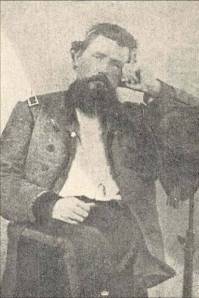
naval forces advanced on the city from both ends of the Mississippi River, and on May 18, 1862, an advance force under Commander S. Phillips Lee dropped anchor at Vicksburg and immediately sent a message demanding the surrender of the city. Lee received not one, not two, but three replies to his surrender demand, all of them negative. He was handed messages from Laz Lindsay, mayor of Vicksburg, from Colonel James L. Autry, military governor of the post of Vicksburg, and from General Martin Luther Smith, commander of the Confederate troops at Vicksburg. Colonel Autry’s reply was by far the most eloquent: “Mississippians don’t know, and refuse to learn how to surrender to an enemy. If Commodore Farragut or Brigadier General Butler can teach them, let them come and try.”
On May 20, the Union navy at Vicksburg began an artillery bombardment of the city that continued on a sporadic basis until July 26. For a civilian population unfamiliar with war, the exploding shells that fell among them caused shock and terror. One local newspaper reported the effects of the bombardment on Vicksburg’s residents: “Men, women and children, both black and white, went screaming through the streets, seeking a place of safety – some dressed, and others almost nude. Mothers were running with little babes in their arms crying, ‘where will I go?’ …In a short time the hills three or four miles east of the city were covered with people who had fled from danger.”

The Union fleet pounded Vicksburg with thousands of shells, but the bombardment did relatively minor damage and casualties were light. On July 27 the Federal boats had to leave Vicksburg or risk being stranded by the falling level of the Mississippi River. The threat to the city was over, but the respite was a short one, for a new effort to take the city was not long in coming.
On the night of April 30, 1863, General Ulysses S. Grant crossed the Mississippi River below Port Gibson with his army. Once on Mississippi soil, Grant moved quickly and decisively, never allowing the Confederates to unite their superior forces against him. In the space of 17 days, the Federals fought five major battles, winning the all: Port Gibson on May 1, Raymond on May 12, Jackson on May 14, Champion Hill on May 16, and Big Black River on May 17. After the defeat at the Big Black River, Confederate General John C. Pemberton retreated back into the Vicksburg defenses with his defeated army.
Dora Richards Miller was one of the civilians living in Vicksburg at the time, and she witnessed the sad spectacle of the broken Confederates streaming back into the city. She wrote: “About three o’clock the rush began. I shall never forget that woeful sight of a beaten, demoralized army that came rushing back – humanity in the last throes of endurance.”
Grant followed the retreating Confederates closely, and at sunset on May 18, 1863, the vanguard of the Union army reached the outskirts of Vicksburg. Despite the fact that Pemberton had nearly 30,000 men defending the city, Grant believed the Rebels were demoralized from their recent defeats and could not withstand a direct assault. But once in their fortifications, Confederate morale rebounded quickly. On May 19th and again on May 22, Grant assaulted the enemy stronghold, but both times his attacks were repulsed with heavy losses. After his second attack on Vicksburg ended in failure, Grant decided to besiege the city and starve the Confederates into submission.
While the fighting raged on the front lines, the civilians trapped in Vicksburg were learning firsthand the horrors of war. The men, women, and children, both black and white, were exposed to the same hail of bullets and shell fragments as the soldiers, only they did not have the consolation of fighting back against their tormentors. They literally had to face incoming fire from all directions – Union artillery shells from the siege lines outside the city often skimmed over the Confederate earthworks and slammed into the city. The Union navy also fired thousands of rounds of artillery into Vicksburg from the Mississippi River.
Fortunately, many of the civilians trapped in Vicksburg had lived through the 1862 naval ![]() bombardment of the city, and had already learned to protect themselves by digging caves for shelter. This knowledge quickly spread throughout the population, and Vicksburg was soon honeycombed with underground shelters. The loess soil of Vicksburg made digging caves very easy; some of them were simple affairs, just large enough for a single family, while others were large caverns with enough room for multiple families.
bombardment of the city, and had already learned to protect themselves by digging caves for shelter. This knowledge quickly spread throughout the population, and Vicksburg was soon honeycombed with underground shelters. The loess soil of Vicksburg made digging caves very easy; some of them were simple affairs, just large enough for a single family, while others were large caverns with enough room for multiple families.
The occupants of the caves tried to make them more comfortable by bringing in furnishings – Lida Lord, the daughter of Reverend William Lord, rector of Christ Church, described the cave her family sheltered in: “This cave ran about twenty feet underground, and communicated at right angles with a wing which opened on the front of the hill, giving us a free circulation of air. At the door was an arbor of branches, in which on a pine table, we dined when shelling permitted. Near it was a dug-out fireplace and an open-air kitchen, with table, pans, etc. In the wall of the cave were a small closet for provisions, and some niches for candles, books, and flowers…Our cave was strongly boarded at the entrances, and we had procured some mattresses which made comfortable beds. For a time we slept in the tent, and only used the cave for a shelter.”
The caves were very successful at protecting Vicksburg’s residents from the shells and mini balls being fired into the city – less than 20 civilians can be documented as being killed during the siege. In fact, caves were so popular during the siege that a lively business grew up in buying and selling caves, and a number of men made a tidy profit digging caves for money.
The citizens of Vicksburg, who lived in the city during the Civil War and endured all of the hardships, privations, and dangers brought about by the conflict, are all long since dead. But I would like to share some of their personal stories, as there are still many tangible reminders in modern-day Vicksburg of the men, women, and children who spent 47 days under siege 150 years ago.
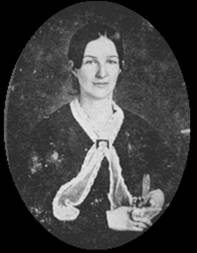
During the Siege of Vicksburg, resident Emma Balfour kept a diary that is a very moving account of civilian life during the siege of the city. When she first saw the defeated Confederates streaming back into the city after the Battle of Big Black River, she wrote, “My pen almost refuses to tell of our terrible defeat…What is to become of all the living things in this place when the boats begin shelling – God only knows. Shut up as in a trap, no ingress or egress – and thousands of women and children who have fled here for safety…”
Like most Vicksburgers, Emma soon learned how to survive when caught in the open during a Federal artillery barrage, As she wrote in her diary, “If you see a shell burst above you, stand still, unless it is very high; if it be the sound of a Parrott, the shot has passed before you heard it…and so on…sometimes while watching one, another comes and may explode or fall near you ‘ere you are aware.” She also wrote of the shelling, “The general impression is that they fire at the city…thinking that they will wear out the women and children and sick, and Gen. Pemberton will be forced to surrender the place on that account, but they little know the spirit of Vicksburg’s women and children if they expect this. Rather than let them know they are causing us any suffering we would be content to suffer martyrdom.” Fortunately, Emma Balfour and the home she loved so much both survived the siege – the Balfour House is at 1002 Crawford Street, next door to the Pemberton Headquarters.
Despite the terrible dangers civilians were exposed to, civilian morale was
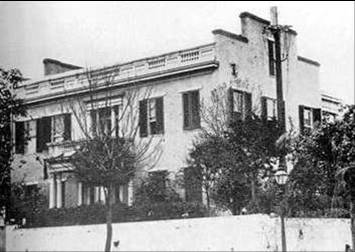
high during the early days of the siege, and the people continued to carry on with their lives as best they could under the circumstances. Reverend William W. Lord held services every day at Christ Episcopal, the only church in Vicksburg during the siege that survives to this day.
When the siege began, Reverend Lord and his family took shelter in the rectory adjacent to

the church, but it proved to be a very hazardous place to be. Lida Lord, the reverend’s daughter, wrote: “Before sunset a bombshell burst into the very center of the dining room … crushing the well-spread table like an eggshell, and making a great yawning hole in the floor, into which disappeared supper, china, furniture… and our stock of butter and eggs.” The family was forced to take shelter in the church basement for safety from the shell fire, which turned the rectory into “such a scene of desolation you can hardly imagine,” according to Mrs. Lord. The family eventually had a cave dug that they moved into for the remainder of the siege. The rectory was so badly damaged that it had to be torn down after the war and a new one built.
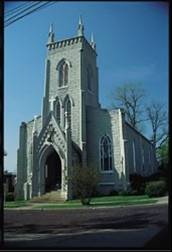
In 1912, Lucy McRae Bell, daughter of William and Indiana McRae of Vicksburg, wrote an article for
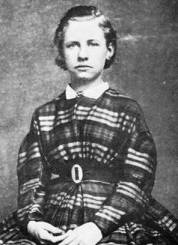
Harper’s Weekly entitled, “A Girl’s Experiences in the Siege of Vicksburg,” in which she explained that her family had to quit their house for the safety of a cave. The new residence nearly proved fatal to Lucy, as she later explained: “A shell came down on the top of the hill, buried itself about six feet in the earth, and exploded. This caused a large mass of earth to slide from the side of the archway in a solid piece, catching me under it…As soon as the men could get to me they pulled me from under the mass of earth. The blood was gushing from my nose, eyes, ears, and mouth.” Lucy survived her close call with death, and so did the family home – it still stands at 822 Main Street in Vicksburg.
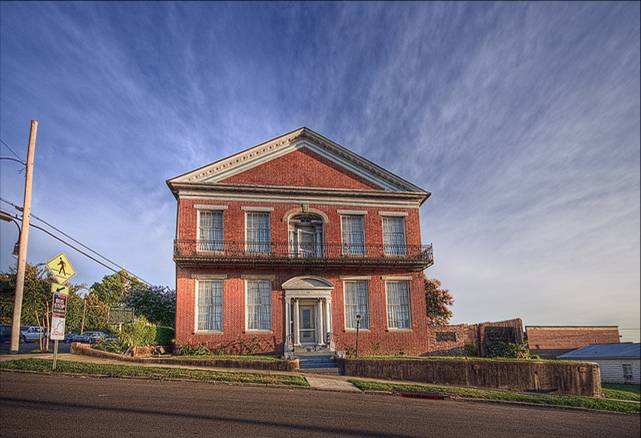
Vicksburg businessman Duff Green began construction of the home that bore his name shortly after he married Mary Lake in 1855. During the siege the Confederates used the residence as a hospital and the Green family sheltered in a cave dug on the grounds near the house. Mary Green gave birth to a son while living in the cave, and the proud parents named the boy William Siege Green to commemorate his unusual place of birth. After the siege ended the Federals used the residence as a soldier’s home for sick and disabled Union soldiers.
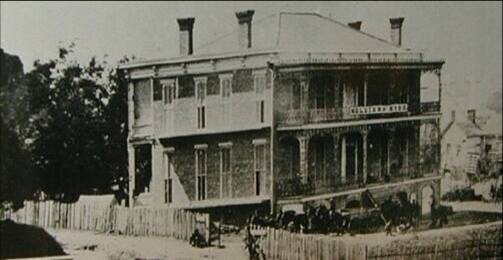
During the siege Colonel Winchester Hall, commander of the 26th Louisiana Infantry, was
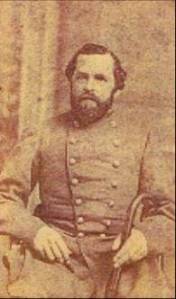
taken to the Hansford House after being wounded in the leg. As he was carried up to the home on a stretcher he saw he wife waiting for him, and when he saw her he shouted, “Hurrah for the Confederacy!” Hall had his entire family, including children, with him as he recuperated at the Hansford House. The Union shelling around the residence became so intense at one point that the colonel moved his family out of the home to a hill behind the structure. They pitched two tents in a section of the hillside that had been cut away to provide a shelter. Shortly after moving there, an artillery round exploded nearby, killing a soldier. Fortunately, Hall’s family was away from the shelter getting some food when this happened. Hall ended up moving his family two more times before he found a location where he felt his family was safe from the shelling.

William A. Lake moved to Vicksburg about 1833 from Maryland. A successful lawyer in the
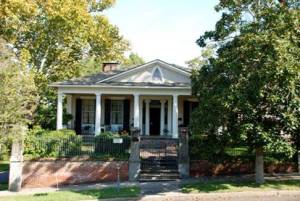
city, he was a member of the Mississippi Senate in 1848 and served in the United States Congress from 1855 – 1857. Lake was a candidate for the Confederate Congress in 1861 when he was killed in a duel by his election opponent, Henry C. Chambers. He is buried in Cedar Hill Cemetery in Vicksburg. During the siege of Vicksburg, the gate of his home was struck by a Union artillery shell, and this damage can still be seen today.

The Shirley House, known before the war as “Wexford Lodge,” is the only wartime structure still standing in the Vicksburg National Military Park. In the photo below you can clearly see the effects of the war on the house and grounds, with the dugouts of the 45th Illinois infantry in the foreground, and the beginning of an approach trench to the front line starting in the yard.
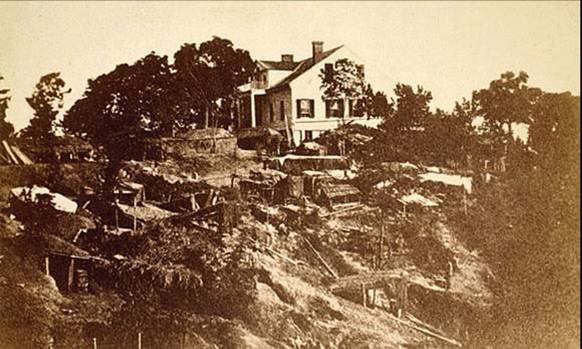
James and Adeline Shirley purchased Wexford Lodge in January 1851; it had been described in a local newspaper as “a most desirable residence in a healthy location.” By the summer of 1863, it was in anything but a healthy location. Both James and Adeline were New England natives, and they passed on their Northern sympathies to their children. Their pro-Union views were not popular in Vicksburg, and even before the war started the Shirley’s had to send their eldest son, Frederick, to Indiana because they were afraid that his outspoken support for Abraham Lincoln would lead to trouble.
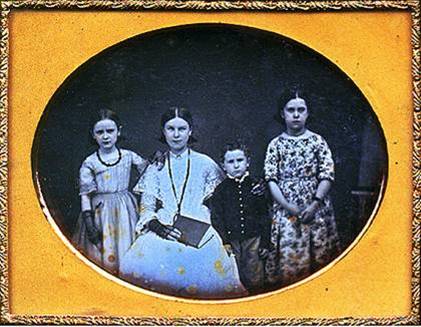
During the siege of Vicksburg, the Shirley House was only 400 yards beyond the Confederate lines. The Rebels had planned to burn the home before the Federals arrived, but Adeline refused to leave. In fact, she stayed even after the fighting started, sheltering with her 15-year old son Quincy and two black servants in a corner behind a chimney for two days before everyone was evacuated to a cave near the house. The family eventually took up residence in a plantation several miles outside of Vicksburg, except for Quincy, who picked up a musket and joined the Federal troops who were literally fighting on his very doorstep. Shortly after the siege ended, James Shirley wrote to his brother, “I have made arrangements to move to Vicksburg. My house and land are so cut up that I cannot at present use them.”
One group that often is overlooked in histories of the Vicksburg siege are the ![]() African American slaves who endured the 47 days of fighting alongside their masters. Often they sheltered in the very same caves with their owners – Mary Loughborough was one such owner, and she noted in her diary that her slaves had “More courage than is usually attributed to negroes.” She also wrote that her slave George slept at the entrance to her cave with a pistol, and told her that anyone attempting to enter “Would have to go over his body first.”
African American slaves who endured the 47 days of fighting alongside their masters. Often they sheltered in the very same caves with their owners – Mary Loughborough was one such owner, and she noted in her diary that her slaves had “More courage than is usually attributed to negroes.” She also wrote that her slave George slept at the entrance to her cave with a pistol, and told her that anyone attempting to enter “Would have to go over his body first.”
The siege was just as deadly to slaves as it was to the white citizens of Vicksburg – The funeral home records kept during the fighting noted that six “colored persons” were buried during the siege. Only one was identified by name – William Newman, a free black who was “killed by a shell.”
Slaves also had to face dangers that the white citizens did not, as many male slaves were
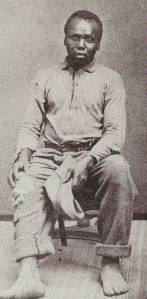
forced to work on the front lines helping dig and repair Confederate fortifications during the siege. One slave named Abraham avoided an almost near certain death on July 1, when the Federals set off a huge mine under the 3rd Louisiana Redan. A number of slaves were working in the Redan at the time of the explosion, digging a countermine to find the Union tunnel being dug under them. Seven of the slaves were killed in the blast, but Abraham was thrown into the Union lines and survived. Dr. Silas T. Trowbridge, chief surgeon of the 3rd Division, 17th Army Corps, examined Abraham and found that he was “Badly bruised, and for some days I thought his chances to live very doubtful. He fell on soft ground, and evidently on the back part of his head and shoulders, as there were the most serious injuries. After recovering, Abraham found a job on the staff of General James B. McPherson as a cook.
As the siege went on week after week, civilian morale began to flag under the relentless Union bombardment of the city. Shortages of food and water made living conditions even worse, and what supplies were

available for purchase usually came with sky-high prices attached. One refugee in Vicksburg, Dora Miller, wrote: “We are lucky to get a quart of milk daily from a family near who have a cow they hourly expect to be killed. I send nearly five dollars to market each morning, and it buys a small piece of mule meat. Rice and milk is my main food; I can’t eat the mule meat…I am so tired of cornbread, which I never liked, that I eat it with tears in my eyes.”
Mary Ann Webster Loughborough was the wife of a Confederate officer stationed at Vicksburg, and in 1864 she published a book entitled “My Cave Life in Vicksburg” about her experiences during the siege. In the manuscript she managed to convey the despair that gripped many of the people trapped in Vicksburg: “How very sad this life in Vicksburg! How little security can we feel,
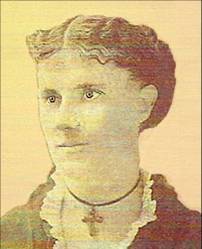
with so many around us seeing the morning light that will never more see the night! How blightingly the hand of warfare lay upon the town! Even in the softening light of the moon, the closed and desolate houses – the gardens, with gates half open, and cattle standing amid the loveliest flowers and verdure! This carelessness of appearance and evident haste of departure was visible everywhere – the inhabitants, in this perilous time, feeling only anxiety for personal safety and the strength of their caves homes.”
For many civilians, General Joseph E. Johnston’s Army of Relief was their hope of salvation, and for many days they waited anxiously to hear the booming of cannon from the east that announced his coming. But as the siege went on, the people slowly lost hope, and as Lida Lord said, “Joseph E. Johnston was our angel of deliverance in those days of siege, but alas! We were never even to touch the hem of his robe.”
As June gave way to July, and with his men growing steadily weaker from exposure and lack of food, General John C. Pemberton was forced to seek terms of surrender from General Grant on July 3, 1863. At ten o’clock a.m. on July 4, 1863, the Rebel defenders of Vicksburg marched out in front of their earthworks, stacked their arms, and furled their torn and tattered flags.
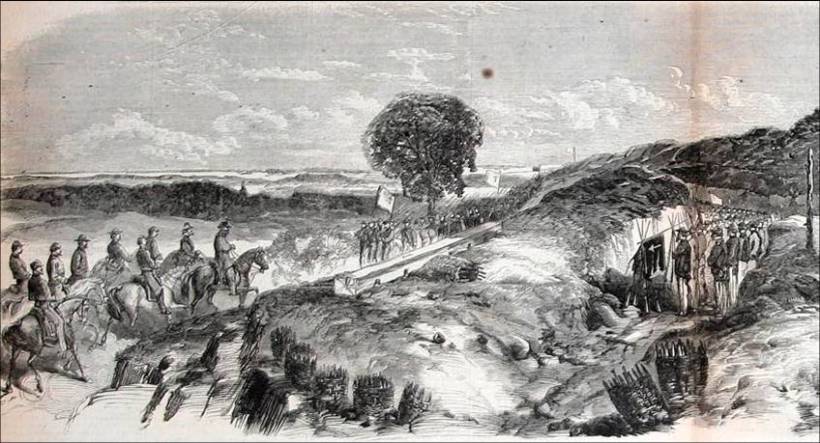
Once the surrender was completed, victorious Union troops marched into Vicksburg to take possession of the city. They raised the Stars and stripes over the Warren County Courthouse, and this symbol of Federal might could be seen for miles around by the citizens of Vicksburg. On seeing the United States flag flying over the courthouse, Unionist Dora Miller wrote, “Now I feel once more at home in mine own country.” Probably more typical was the reaction of Alice Shannon, who wrote to her sister that she could see “that hateful flag flying from the Court House Hill.”
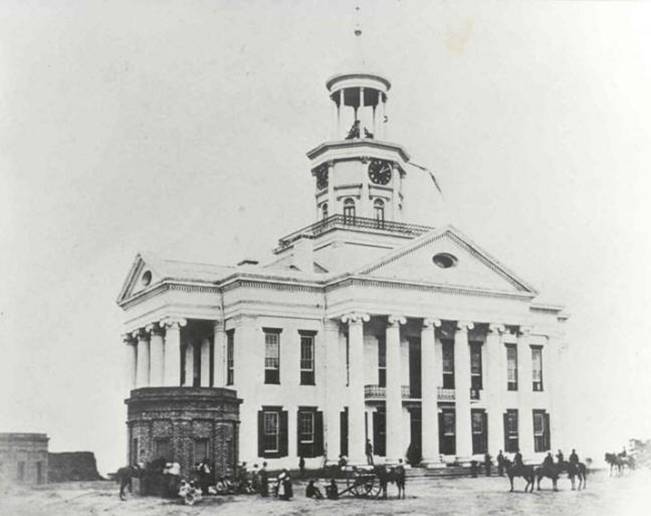




Great history I did not know. Thank you
Wonder how many of those caves hung around, say, as late as prohibition.
This is a picture of the entrance to Hough’s Cave, the last surviving Civil War cave in Vicksburg. This picture was taken in 1972, but the cave is still surviving as of 2019.
Thank you for your history posts. So much of what I see published on the US Civil War talks only of the military strategy and the battles themselves. But I tend to be more interested by the lives of the “normal people” (such as I might be) before, during, and after.
We got to visit Vicksburg in 2014 on a riverboat cruise of the lower Mississippi River. One of the things we learned was how difficult it has been for the town the celebrate US Independence Day because of the coinciding date of the town’s surrender in the Civil War.
Thank you very much for the kind words! I really like telling small stories about ordinary people who did extraordinary things during the Civil War. For the most part I leave the stories of the great generals and big battles to others. Vicksburg does have a long and complex history in relation to the celebration of the 4th of July – I actually wrote a story about that not too long ago; if you would like to read it, here is the link: https://mississippiconfederates.wordpress.com/2018/03/14/vicksburg-and-the-4th-of-july/
I cannot let that reference go by without taking the opportunity to post, yet again, a favorite (related) passage from Mark Twain in Roughing It: